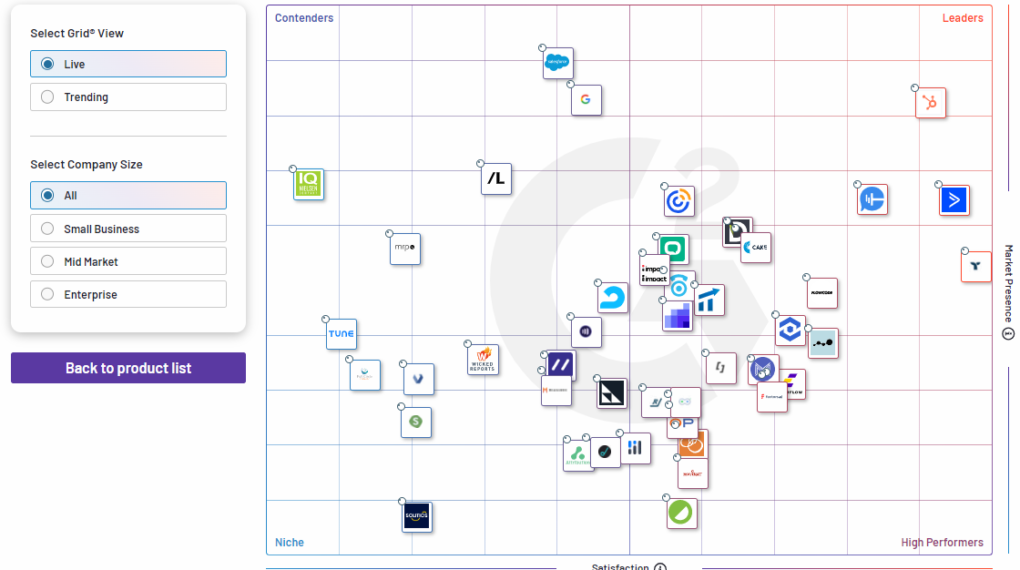
5 Minute Read
Overcoming the Rapid Martech Evolution
I know you’re not surprised by this, but many Martech vendors make choosing the right tools for your business challenging. It’s essential to conduct thorough research, assess vendors based on their track record, scalability, customer support, and avoid redundancies in functionality. Regularly reviewing and optimizing your Martech stack ensures your organization can streamline operations, reduce costs, and improve overall efficiency, all at the speed of rapid evolution. So what actual obstacles should you be on the lookout for when building out your Martech strategy?
First, we must carefully select the tools that align with your marketing objectives while choosing tools that work seamlessly together to drive desired outcomes. Having a clear integration plan and seeking platforms that offer robust APIs is crucial to ensure smooth data flow and communication between different tools. But wait, there is so much more – beginning with the most challenging, gaining real-time insight into customer behaviors and their journey to purchase and retention.
Unlocking a Unified Customer View
To gain real-time unified customer views into the customer’s relationship with our solutions and products, we must have access to all the data collected about the customer. This data cannot be squirreled away in siloed points of collection.
The presence of data silos, where information is scattered across different tools and databases, is truly the death knell for any Martech strategy. This fragmentation cripples businesses from obtaining that holistic view – the holy grail of marketing spend attribution. To overcome this challenge, your company should invest in data integration solutions that consolidate and synchronize data from various sources, enabling a unified customer map. Implementing a customer data platform (CDP) can be instrumental in breaking down these silos and unlocking actionable insights.
Forbes Advisor lists seven of the best CDPs of 2023, including:
- Segment: Best Overall for Real-Time Personalized Customer Journeys
- Emarsys: Best for Automated Omnichannel Customer Engagement
- Optimove: Best for Predictive Segmentation
- FirstHive: Best for Manufacturers
- Lytics: Best for Expanding Advertising Reach
- BlueConic: Best for International Data Privacy Management
- ActionIQ: Best for Competitive Customer Experience Management
To view Forbes’ scores for the top seven outlined above, visit their article: 7 Best Customer Data Platforms (June 2023).
Strike the Right Balance
Once we have addressed the organization’s lack of customer data visibility, we must ensure we’re protecting the customer data we are now stewarding. In an era of stringent data privacy regulations, businesses must prioritize compliance while delivering personalized marketing experiences. Adhering to regulations such as GDPR and CCPA is critical and requires organizations to obtain proper consent, secure data storage, and handle data responsibly. Businesses can strike the delicate balance between personalization and compliance by implementing robust data governance practices and leveraging technologies that provide transparency and control over data usage.
In the healthcare industry, businesses must comply with the Health Insurance Portability and Accountability Act (HIPAA) regarding data privacy. HIPAA requires strict security measures to protect patient health information. When integrating Martech tools, organizations must ensure vendors meet HIPAA requirements and implement features like secure data storage, encryption, and access controls. Establishing a robust data governance framework, conducting regular audits, and training employees on HIPAA regulations is crucial. Prioritizing HIPAA compliance builds trust, safeguards sensitive data, and enables personalized marketing experiences responsibly.
Unlocking the Power of AI
Artificial intelligence (AI) and machine learning (ML) have the potential to revolutionize personalized marketing campaigns. However, effectively implementing these technologies can be challenging. Organizations often need help with skill gaps, data quality issues, and interpreting the outputs of AI/ML algorithms. To address these challenges, investing in employee training programs, collaborating with data experts, and leveraging AI/ML solutions that offer explainable insights can help marketers harness the true power of these technologies. Giving into fear and dismissing the importance of AI/ML solutions will push your Martech strategy backward and leave you scrambling to remain relevant and competitive.
Bridging the Skills Gap
The rapidly evolving Martech landscape demands a convergence of marketing and technology skills. Bridging the skills gap is vital for effective Martech implementation. Marketers should be encouraged to upskill themselves in technology, while IT professionals need to understand marketing objectives. Encouraging cross-functional collaboration, fostering a culture of continuous learning, and partnering with external experts can help bridge this divide and drive successful Martech initiatives. New roles are emerging to ensure the Marketing and IT/Tech teams have the necessary internal partnerships to successfully deploy bleeding-edge solutions.
Decoding the Customer Journey
As marketing channels and touchpoints multiply, accurately attributing the impact of each channel on the customer journey becomes increasingly complex. Implementing robust attribution modeling techniques, leveraging advanced analytics tools, and adopting data-driven approaches can help your business incorporate valuable insights into customer journeys and allocate resources more effectively.
When researching the best solution set that includes attribution tracking, I recommend starting with G2 Business Software Reviews, precisely their current Best Attribution Software Ratings page. Below is a “real-time” image of their entire grid of contenders. The G2 tool lets you choose your company’s market size and gain insight into what’s trending over time and what the “live” real-time reviews provide.

G2 defines the Marketing Attribution category as “software … used by companies to determine how actions, events, or touch points during the prospecting and sales processes contribute to the success of their marketing and sales teams. Since a closed sale is often the result of a combination of several factors and conditions, which may occur in a random order, it’s very difficult to understand what made it successful. Companies use marketing attribution software to assign a value to any factor that may have contributed to the success of a sale based on the influence it had on the customer or prospect during the interactions with the company.
Marketing attribution software is usually a hub software pulling in data from other marketing and software tools, so it commonly integrates with software solutions used by sales, marketing, or public relations departments, like CRM, marketing automation, email marketing, email tracking, demand generation, or sales analytics tools.
To qualify for inclusion in the Attribution category, a solution must:
- Track multiple marketing and communication channels (TV, social media, phone, email, digital advertising channels, etc.) and capture data on the interactions between the company and its prospects or customers
- Use multiple attribution models like single touch attribution (when all attribution is assigned to only one event), fractional attribution (to include multiple events in the attribution, with equal or different weights), or algorithmic attribution (which uses data science for advanced attribution criteria and models)
- Provide dashboards and visualizations for users to understand which activities performed better and why. The analysis should be based on relevant historical data and user-defined key performance indicators
- Integrate with software solutions used by sales, marketing, or public relations departments, like CRM, email tracking, demand generation, or sales analytics”
Maximizing the Value
Acquiring the best Martech tools is only part of the equation; ensuring effective adoption and utilization is equally essential. Providing comprehensive training programs, fostering a culture of experimentation and innovation, and actively involving end-users in the selection and evaluation process will enhance user adoption and maximize the value derived from your Martech investments.
Adapting to the Evolving Landscape
As the Martech landscape evolves, businesses must remain agile and adaptable in their strategies. By addressing challenges related to integration, data silos, data privacy, AI/ML implementation, skills gap, attribution modeling, vendor selection, and technology adoption, your business can overcome hurdles and unlock the full potential of its Martech stack. Embracing continuous learning, staying informed about emerging trends, and proactively seeking innovative solutions will ensure that your Martech strategy remains effective in an ever-changing marketing landscape.